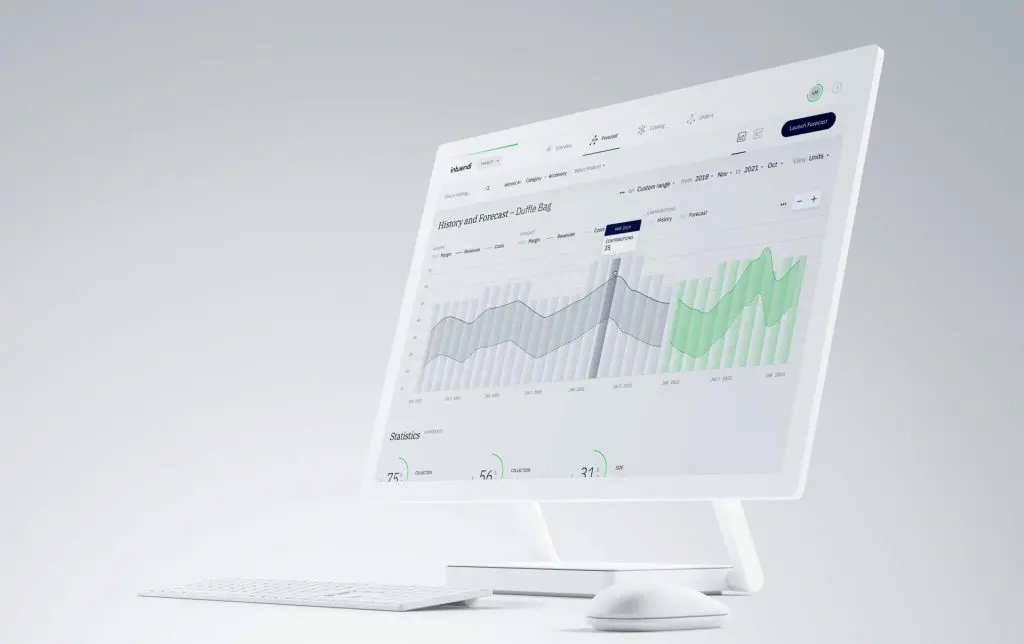Dive into the essentials of Minimum Order Quantity (MOQ) – a pivotal concept shaping the dynamics between suppliers, manufacturers, and buyers. At its core, MOQ defines the smallest product batch a supplier will sell, a threshold crucial for balancing production costs and demand. This guide unpacks the reasons suppliers set MOQs, its impact on various business models, and practical strategies to navigate it. From advantages and challenges to calculating and adjusting MOQs and exploring alternative inventory methods, this guide offers a roadmap to mastering MOQ’s role in the supply chain and harnessing it for smarter, more efficient growth.
What is Minimum Order Quantity (MOQ)?
Minimum Order Quantity (MOQ) is a key lever in the supply chain, defining the smallest number of units a supplier is willing to produce or sell in one go. Essential for efficient production and inventory management, MOQs allow suppliers to cover operational costs, achieve economies of scale, and offer competitive pricing. By setting a clear threshold—such as 500 units—suppliers ensure that each order is financially viable, balancing labor, materials, and storage with demand. For buyers, understanding MOQs is crucial, influencing purchasing strategies, inventory planning, and cash flow, and ultimately shaping smoother, more cost-effective operations.
Why Do Suppliers Use Minimum Order Quantities?
Suppliers set Minimum Order Quantities (MOQs) as a strategic tool to boost cost efficiency, streamline production, and manage inventory with precision. MOQs enable suppliers to capitalise on economies of scale by reducing per-unit costs, as larger production runs spread fixed costs like labor, logistics, and setup across more units. This not only improves cost-effectiveness but also supports inventory control, helping suppliers manage stock levels predictably and reduce the risk of deadstock. MOQs also mitigate financial risk, allowing suppliers to better align production with market demand, ensuring healthier cash flow, and protecting against losses tied to excess or unsold inventory. Through MOQs, suppliers cultivate a balanced, efficient, and profitable supply chain.
How Does Minimum Order Quantity (MOQ) Impact Businesses?
The impact of Minimum Order Quantity (MOQ) on businesses differs greatly depending on their position within the supply chain, with suppliers and buyers facing unique advantages and challenges associated with MOQ requirements. Grasping these effects empowers both sides to develop stronger strategies and make well-informed choices.
Impact on Suppliers
For suppliers, Minimum Order Quantity (MOQ) provides a strong foundation for reducing costs and achieving consistent profits. By setting an MOQ, suppliers ensure each order covers production costs, promoting cost efficiency and financial stability. This approach also allows suppliers to optimise production, minimising idle time and enhancing overall workflow. However, setting MOQs comes with its own set of challenges. High minimums can restrict a supplier’s customer base, excluding smaller or seasonal buyers and limiting flexibility. Suppliers must find a balance to avoid rigid MOQs that could hinder market reach and adaptability in response to fluctuating demand.
Impact on Businesses
For buyers, especially larger companies, Minimum Order Quantities (MOQs) present valuable cost-saving opportunities and stable supplier relationships. Bulk purchasing lowers per-unit costs, allowing for expense reduction and a consistent product supply. This arrangement suits businesses with predictable demand and ample storage capacity, fostering reliable partnerships with suppliers that may result in better pricing, prioritised order fulfilment, and supply chain consistency. Smaller businesses, however, often face hurdles with high MOQs. Large orders can strain cash flow and storage, especially with uncertain demand. Smaller buyers may benefit from negotiating more flexible terms, building lasting relationships, or setting recurring orders to secure MOQ conditions that better fit their scale and needs.
Pros and Cons of Minimum Order Quantities
Comprehending the advantages and disadvantages of Minimum Order Quantities (MOQs) enables businesses to evaluate if they can meet these requirements and anticipate their operational impact. MOQs offer both benefits and challenges, with their suitability largely depending on factors like business size, order volume, and storage capability.
Advantages
For suppliers, Minimum Order Quantities (MOQs) are a game-changer, driving profitability and efficiency. With set minimums, suppliers streamline inventory control, avoid overproduction, and cut down on waste. MOQs also unlock economies of scale, where larger production runs reduce per-unit costs, creating a more sustainable and profitable operation. For buyers, meeting MOQs brings cost savings and strengthens supplier relationships. Bulk purchasing often leads to better pricing, faster delivery, and even exclusive perks like early product access. For both sides, MOQs lay the groundwork for a stable, mutually beneficial partnership where resources are optimally managed and costs are controlled.
Disadvantages
For buyers—especially smaller ones—high MOQs can feel like a double-edged sword. The hefty initial investment needed to meet these minimums can tighten cash flow, while managing the resulting inventory can be a logistical juggling act, with storage costs piling up and capital locked in unsold goods. It’s a classic case of too much of a good thing, where excess stock ties down funds that could otherwise fuel growth.
On the supplier side, high MOQs bring their own pitfalls. While larger orders boost profits, rigid minimums may close doors to smaller customers seeking flexibility, driving them toward competitors with friendlier terms. In a landscape that values adaptability, suppliers face the challenge of balancing profitable orders with broadening their market reach.
Types of Minimum Order Quantities
MOQ models come in all shapes and sizes, offering a toolkit for suppliers and buyers to navigate the balancing act of orders and inventory. High MOQs favour bulk production and cost-cutting through economies of scale, appealing to larger buyers with ample demand and storage. Yet, this approach can alienate smaller buyers unable to shoulder big orders. Low MOQs flip the script, opening doors to a wider market but adding complexity with more frequent, smaller orders.
Then there’s a middle path: flexible MOQ models that adapt based on demand, with lower minimums in peak seasons and higher ones off-peak to maintain efficiency. Dynamic pricing offers another clever twist, with prices that scale to encourage larger orders without a fixed MOQ.
Vendor-managed inventory (VMI) and consignment stock bring collaboration to the fore. VMI lets suppliers manage stock for buyers, ensuring optimal levels without strict MOQ requirements, while consignment stock keeps inventory ownership with the supplier until a sale is made, easing cash flow for buyers. Together, these alternative models offer a buffet of tailored solutions, letting suppliers and buyers mix and match for a supply chain that’s as flexible and efficient as their business needs.
Not sure how much stock to order and when? Ditch the guesswork.
How to Calculate Minimum Order Quantity
(MOQ) involves a thorough evaluation of demand, cost structure, and inventory needs. A methodical approach to setting MOQ enables suppliers to achieve a balance between cost efficiency and demand, enhancing both profitability and production flow. Here is a step-by-step guide to establishing a practical MOQ.
Step 1: Determine Demand
Forecast demand accurately to set an MOQ that aligns with market needs, reducing excess inventory. By analysing sales data, market trends, and customer history, suppliers can create a realistic MOQ that supports consistent inventory turnover and cost management.
Step 2: Calculate Your Break-Even Point
Identify the minimum production quantity needed to cover costs by calculating the break-even point. This analysis, which factors in both fixed and variable costs, helps suppliers set a base MOQ that ensures financial viability for each production run.
Step 3: Understand Holding Costs
Consider holding costs like warehousing and insurance to gauge how much inventory can be managed efficiently. Higher holding costs may lead to a lower MOQ to reduce storage time, while lower costs might allow for a higher MOQ, balancing inventory and storage expenses.
Step 4: Set Your MOQ
After assessing demand, break-even, and holding costs, establish an MOQ that meets financial and logistical goals. Adjust the MOQ seasonally if needed, increasing it in peak times to boost output and reducing it off-peak to control storage costs and avoid surplus. This ensures a flexible, cost-effective MOQ suited to market dynamics.
Factors that Influence Minimum Order Quantity
Several critical factors shape the Minimum Order Quantity (MOQ) decision, each impacting a supplier’s ability to set an MOQ that balances cost efficiency with customer demand. These factors range from raw material availability to production capacity and market demand, creating a framework within which suppliers determine the most viable MOQ.
Raw Materials
The availability and cost of raw materials greatly impact MOQ. When materials are plentiful and affordable, suppliers can manage smaller batches cost-effectively. However, with scarce or costly materials, higher MOQs become necessary to support bulk purchasing. Seasonal price fluctuations also influence MOQ adjustments, prompting suppliers to buy in larger quantities during peak periods.
Production Capacity
A supplier’s production capacity determines the minimum volume they can efficiently handle. Limited capacity may require higher MOQs to optimise production runs, avoiding disruptions caused by low-volume cycles. Scalable production systems, however, allow for more flexible MOQs, adapting to various order sizes without sacrificing efficiency.
Market Demand
Market demand guides MOQ by indicating expected sales volume. Strong demand supports higher MOQs due to a ready market for larger batches, while uncertain or fluctuating demand may lead suppliers to set lower or flexible MOQs to prevent overstocking. Seasonal trends, purchasing patterns, and economic conditions all play a role in aligning MOQ with anticipated sales.
These factors together help suppliers set an MOQ that balances financial viability and operational efficiency, allowing them to meet market needs effectively without compromising production flow or cost control.
How MOQ Affects Inventory and Logistics
The connection between Minimum Order Quantity (MOQ) and inventory and logistics management is crucial for businesses aiming to control stock, optimise operations, and lower costs. The chosen MOQ level—high or low—directly affects inventory volume, storage requirements, and broader supply chain dynamics, all contributing to overall business efficiency.
High MOQ
High MOQs require companies to manage larger inventories, which means more storage space and increased warehousing expenses. While suppliers benefit from economies of scale and lower per-unit production costs, buyers face the challenge of handling larger stockpiles. High MOQs can also raise the risk of unsold inventory, especially with uncertain demand, leading to potential losses from obsolescence or spoilage. However, high MOQs provide more predictable logistics, with bulk shipping options that reduce per-unit transportation costs.
Low MOQ
Low MOQ requirements give buyers flexibility to order smaller quantities more frequently, reducing storage and inventory costs. Ideal for businesses with limited space or fluctuating demand, low MOQs help minimise excess stock and allow for faster replenishment in fast-paced industries. For suppliers, though, low MOQs can mean more frequent production cycles and higher setup costs, potentially decreasing efficiency. Additionally, more frequent shipments may increase transportation costs.
Inventory Turnover Benchmarks
MOQ has a direct impact on inventory turnover, a key measure of business performance. High MOQs tend to slow turnover, with products lingering in storage longer to meet larger order requirements, which can tie up capital and raise holding costs. In contrast, lower MOQs support quicker turnover, enabling faster responses to market shifts and reducing the risk of stock obsolescence. Aligning MOQs with target turnover rates is crucial for maintaining cash flow and balanced inventory levels, supporting stable operations.
In short, MOQs play a pivotal role in shaping inventory and logistics strategies, influencing how businesses balance stock management, cost control, and responsiveness to demand. Choosing the right MOQ helps achieve an optimal mix of efficiency and financial sustainability.
Struggling with tailoring your MOQ strategy to your business needs? Data-driven insights are key to resolving this dilemma.
Behold, the Intuendi Solution!
Strategies for Managing and Negotiating Minimum Order Quantities
Managing and negotiating Minimum Order Quantities (MOQs) effectively is essential for businesses to streamline supply chain operations and realise cost savings. Through adopting strategies that encourage collaboration, minimise excess stock, and foster long-term partnerships, both suppliers and buyers can gain significant advantages. Here are several methods to help businesses handle MOQs more efficiently.
Incentivise Higher Spending
Suppliers can motivate buyers to meet MOQ requirements by offering perks like discounts, rebates, or added services for larger orders. This incentive approach helps buyers save on per-unit costs and allows suppliers to streamline production with fewer, larger orders. For instance, a tiered pricing structure encourages buyers to reach higher order volumes by lowering prices as quantities increase.
Eliminate Slow-Moving SKUs
Reducing or eliminating slow-moving SKUs enables suppliers and buyers to focus on high-demand items, cutting down on inventory costs. By analysing sales data, suppliers can identify low-demand products to lower MOQs or discontinue, ensuring that resources go toward top-performing items. Buyers also benefit by channelling their purchasing power toward fast-sellers, improving inventory turnover and cash flow.
Improve Inventory Turnover
Data insights help optimise order strategies and boost turnover. Analysing purchasing trends and demand cycles allows buyers to place more frequent, smaller orders in peak seasons, avoiding overstocking. Suppliers can adjust MOQs to align with seasonal demand, ensuring inventory is well-balanced throughout the year.
Build Stronger Relationships
Long-term, trust-based relationships between suppliers and buyers often lead to better MOQ terms. Open communication fosters flexibility, with suppliers more likely to offer favourable MOQ arrangements to valued buyers. This partnership can even lead to collaborative arrangements like vendor-managed inventory (VMI), which streamlines stock management.
Find Alternate Suppliers
For buyers, exploring alternate suppliers can yield more flexible MOQ options. Sourcing from multiple suppliers diversifies risk and can lead to better MOQ terms through competitive pricing. This approach reduces reliance on a single supplier, creating room for better deals and potentially more adaptable MOQs.
Together, these strategies empower suppliers and buyers to manage and negotiate MOQs more effectively, building a supply chain that’s efficient, responsive, and mutually beneficial.
How to Adjust MOQ Over Time
Adapting Minimum Order Quantities (MOQ) is crucial for businesses to stay agile in a world of shifting demand and evolving market trends. Adjusting MOQ helps companies balance inventory and costs in real time, ensuring they’re always in sync with the latest changes. Here’s a look at how demand, market shifts, operational limits, and technology drive smart MOQ adjustments.
Demand fluctuations, like seasonal spikes, often call for MOQ tweaks. Suppliers may raise MOQs during peak seasons to streamline production or lower them in off-peak times to avoid excess inventory. This approach reduces the risk of stockouts or costly overstock, making inventory management a breeze.
Market trends also shape MOQ decisions. In fast-paced industries like fashion and tech, where products quickly go out of style, lower MOQs allow businesses to keep up with changing tastes and avoid outdated stock. This nimble approach keeps them competitive and cuts the cost of unsold inventory.
Operational capacity is another key factor. As companies grow, they may raise MOQs to leverage economies of scale, but they can also reduce them when resources are tight. This flexibility keeps production flowing smoothly, no matter the circumstances.
Technology, meanwhile, is the driving force behind modern MOQ management. With advanced analytics and real-time insights, businesses can track demand and inventory in unprecedented detail. Machine learning, for example, predicts the ideal MOQ by analysing past sales and trends, helping companies stay proactive and cost-efficient.
Through ongoing adjustments informed by demand, market dynamics, operational capacity, and cutting-edge tech, businesses can craft an adaptive MOQ strategy that fuels growth and keeps pace with today’s ever-changing supply chain landscape.
Alternative to Minimum Order Quantity
In certain situations, traditional Minimum Order Quantity (MOQ) requirements may not be the best fit for all businesses or market conditions. Alternative MOQ models provide increased flexibility, enabling suppliers and buyers to collaborate more effectively and mitigate inventory management risks. Here are several popular alternative approaches to MOQ that offer advantages for both parties.
Flexible MOQ Models
Flexible MOQ models offer suppliers the ability to adjust minimum order quantities based on factors like order size, seasonal demand, or buyer loyalty. For example, suppliers might lower MOQ during slow seasons to keep production running smoothly or introduce volume-based discounts that reduce MOQ as order quantities grow. This flexibility enables suppliers to reach a broader customer base, catering to smaller buyers without requiring them to commit to large orders upfront, and expanding market potential without sacrificing cost efficiency.
Vendor-Managed Inventory (VMI)
Vendor-Managed Inventory (VMI) is a collaborative approach where suppliers oversee stock levels for buyers, replenishing inventory as needed. This eliminates strict MOQ requirements, reducing the buyer’s storage and management costs and helping prevent stockouts or overstocking. For suppliers, VMI secures a consistent order flow and strengthens buyer relationships, allowing for quick responses to demand fluctuations. Ideal for volatile industries, VMI fosters agility and partnership between suppliers and buyers.
Consignment Stock Agreements
With consignment stock agreements, suppliers provide inventory upfront, and buyers only pay when items are sold. This arrangement lowers upfront costs for buyers, reducing financial risk and helping those with limited capital or unpredictable demand patterns manage stock with ease. Suppliers retain ownership until sale, easing financial pressure on buyers and nurturing long-term relationships. Particularly useful in uncertain markets, consignment agreements allow both parties to better handle inventory levels while minimising financial exposure.
These alternatives to traditional MOQ models offer dynamic solutions, empowering suppliers and buyers to reduce costs, respond to demand changes, and strengthen inventory management strategies. By embracing flexible options, businesses can find sustainable ways to meet their unique operational needs.
Agility is at the core of sustainable business operations. Find your flow amidst any storm at an integrated approach
Tips to Optimise Your Minimum Order Quantity Strategy
Optimising Minimum Order Quantity (MOQ) strategies is crucial for businesses aiming to maintain balanced inventory control, cost efficiency, and cash flow. Through strategic approaches, suppliers and buyers alike can enhance the advantages of MOQ while reducing potential drawbacks. Here are some valuable tips for improving MOQ practices to boost overall business efficiency.
Incentivise Higher Purchases
Encouraging buyers to meet MOQ levels with attractive incentives—like volume discounts, loyalty perks, or expedited shipping—benefits both parties. This approach helps suppliers secure larger orders for more predictable revenue, while buyers gain added value, creating a win-win arrangement that fosters loyalty and boosts sales.
Boost Inventory Turnover
Focusing on high-demand products is key to maintaining efficient inventory turnover. By analysing sales data, businesses can identify top performers and set lower MOQs for them, encouraging frequent orders and aligning stock with demand. This strategy reduces excess stock risk, improves cash flow, and keeps holding costs down.
Negotiate with Suppliers
For buyers, particularly smaller businesses, negotiating MOQs can create a more adaptable ordering process. Discussing flexible MOQ terms, such as reduced minimums for regular orders or low-demand periods, can ease inventory management. A solid rapport with suppliers builds leverage for favourable terms, making collaboration a win for both parties.
Eliminate Excess Stock
Managing excess inventory is essential for freeing up resources and reducing costs. Using data to identify slow-moving items, businesses can use discounts, promotions, or product bundling to clear surplus stock. By reallocating resources to fast-selling products, companies can improve cash flow and optimise storage.
Focus on Relationships
Strong supplier relationships lead to better MOQ flexibility and reliability. Open, consistent communication establishes trust, increasing the likelihood of favourable terms during demand fluctuations. These partnerships provide stability and adaptability, allowing both sides to respond more effectively to changing market needs.
Application of these strategies is pivotal for the refinement of MOQ approaches, balancing cost efficiency, inventory management, and supplier relationships. A flexible, goal-oriented MOQ strategy aligns with broader business objectives, driving success and resilience in the supply chain.
Mastering MOQ: Your Key to Business Success
Crafting the perfect Minimum Order Quantity (MOQ) strategy is a game-changer for businesses striving for cost efficiency, streamlined inventory, and solid supplier relationships. Whether setting MOQ thresholds as a supplier or managing orders as a buyer, understanding the subtleties of MOQ unlocks smarter decisions and greater flexibility.
A thoughtful MOQ approach keeps production and purchasing aligned with financial goals. Suppliers boost efficiency and profitability, while buyers enjoy cost savings and steady stock. Yet, challenges like cash flow strains and storage demands mean it’s wise to explore alternative models or negotiate when standard MOQs don’t fit.
With data-driven insights, adaptable practices, and strong partnerships, businesses can keep evolving their MOQ strategies to match market shifts. Advanced tech, like inventory management software, makes it easier to forecast demand, set flexible MOQ levels, and maintain ideal stock.
Ultimately, a well-tuned MOQ strategy helps businesses tackle supply chain complexities with agility, driving long-term growth. The right MOQ practices facilitate a cost-effective, relationship-oriented and sustainable business.
From eye-opening inventory management strategies to top-tier demand planning–Intuendi is your go-to for business growth and profitability.






